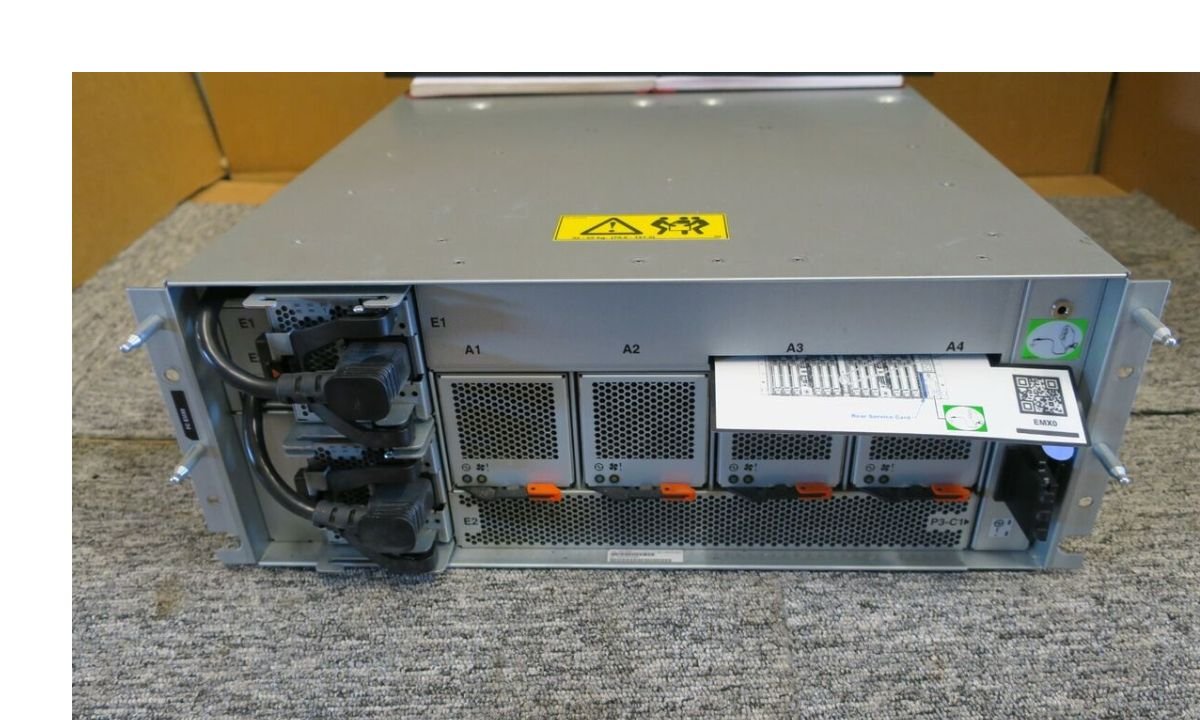In the realm of high-performance computing, efficiency and expansion are paramount. Enter the PCIe+ I/O drawer, a technological marvel that offers an innovative solution to meet the demands of modern data centers. These drawers have become an indispensable component, providing flexibility, scalability, and performance enhancements that are crucial for maintaining competitive edge. For data center managers, IT professionals, and technology enthusiasts, understanding how PCIe+ I/O drawers fit into the infrastructure can unlock significant potential.
Understanding PCIe+ I/O Drawers
What are PCIe+ I/O Drawers?
PCIe+ I/O drawers are specialized hardware units designed to expand the input/output capacity of servers. Each drawer is 8 EIA units tall and includes two power supply units (PSUs) at the top. They support up to 16 adapters, with each adapter offering two ports and operating over two domains. This setup allows for a robust, scalable approach to enhancing data processing capabilities.
The EIA unit is a standard measurement for rack-mounted equipment, ensuring compatibility and ease of integration into existing data center infrastructures. Power supply units are crucial as they ensure the drawer operates efficiently, delivering consistent power to support high workloads. Additionally, the ability to integrate multiple adapters offers significant flexibility, allowing data centers to tailor their hardware to specific needs.
Benefits of PCIe+ I/O Drawers
The primary benefits of PCIe+ I/O drawers include scalability, enhanced performance, and increased flexibility. By supporting numerous adapters, these drawers allow data centers to scale operations without the need for additional servers, which can be costly and space-consuming. This scalability is essential for data centers experiencing rapid growth or fluctuating demands.
Performance is another critical benefit. PCIe+ I/O drawers are designed to handle high-speed data transactions, ensuring that data centers can manage significant workloads efficiently. Furthermore, the modular nature of these drawers offers flexibility, enabling data center managers to customize their setups according to specific operational needs.
The Installation Process
Installing a PCIe+ I/O Drawer
Installing a PCIe+ I/O drawer in a data center involves several key steps. First, it’s important to ensure that the existing infrastructure can accommodate the drawer’s physical dimensions and power requirements. Begin by selecting a suitable location within the server rack that provides adequate ventilation and accessibility.
Next, secure the drawer within the rack using standardized mounting procedures. Once the drawer is in place, connect it to the power supply and ensure that all adapters are properly installed. It’s critical to verify that each component is securely fastened and properly aligned to avoid any operational disruptions.
Considerations for Power Management
Power management is a crucial aspect of installing and operating PCIe+ I/O drawers. Each drawer is equipped with dual power supply units to ensure redundancy and reliability. When installing, ensure that the power connections are stable and comply with the data center’s power distribution standards.
In addition, it’s essential to monitor energy consumption continuously. Implementing advanced power management tools can help optimize energy usage, contributing to overall data center efficiency. Regular maintenance checks can prevent power-related issues, minimizing downtime and maximizing drawer performance.
Connectivity and Networking
Establishing robust connectivity is vital for the effective operation of PCIe+ I/O drawers. This involves integrating the I/O drawer with the data center’s existing network infrastructure. Ensure that all network connections are secure and that the drawer is configured correctly to communicate with other devices.
Utilize high-speed network interfaces to facilitate rapid data transfer, reducing latency and improving overall performance. It’s also essential to regularly update network protocols and configurations to maintain optimal connectivity and security.
Use Cases and Benefits
Enhancing Data Center Operations
PCIe+ I/O drawers have been successfully implemented in various data centers, offering tangible benefits that enhance operations. For instance, technology companies have utilized these drawers to scale their computing power quickly during peak demand periods without the need for significant infrastructure changes.
In another example, financial institutions have leveraged PCIe+ I/O drawers to process large volumes of transactions efficiently. By enhancing their data handling capabilities, these institutions have improved their service delivery, ensuring faster processing times and increased customer satisfaction.
Improved Performance and Flexibility
The performance improvements offered by PCIe+ I/O drawers are particularly evident in environments with high data throughput requirements. Organizations that rely on real-time data processing, such as telecommunications providers, benefit significantly from the increased bandwidth and reduced latency these drawers provide.
Flexibility is another key advantage. With the ability to customize configurations based on specific needs, data centers can adapt quickly to changing demands. This adaptability ensures that operations remain efficient and cost-effective, even as workloads fluctuate.
Cost-Effectiveness
PCIe+ I/O drawers offer a cost-effective solution for data centers seeking to expand their capabilities. By utilizing existing infrastructure and avoiding the need for additional servers, organizations can achieve significant cost savings. The modular design of these drawers also reduces maintenance expenses, as individual components can be replaced or upgraded without impacting the entire system.
Future of PCIe+ I/O Drawers
Emerging Trends and Technologies
The future of PCIe+ I/O drawers is shaped by several emerging trends and technologies. One prominent trend is the integration of artificial intelligence and machine learning capabilities. These technologies enable smarter data processing, allowing data centers to react proactively to changing conditions.
Another trend is the development of higher-capacity adapters and faster network interfaces. These advancements will enhance the performance of PCIe+ I/O drawers, supporting even greater data throughput and reducing latency further. Data centers that adopt these innovations will be better positioned to meet growing demands.
Evolution to Meet Growing Demands
As data centers continue to evolve, so too will PCIe+ I/O drawers. Future iterations of these drawers will likely feature enhanced energy efficiency, reducing operational costs and minimizing environmental impact. Additionally, improved integration capabilities will allow for seamless connectivity with emerging technologies and platforms.
These advancements will ensure that PCIe+ I/O drawers remain a vital component of data center infrastructure, empowering organizations to achieve their goals while maintaining competitive advantage.
YOU MAY ALSO LIKE
Unlocking the Benefits of Remote IT Support in London
Conclusion
PCIe+ I/O drawers have emerged as a critical asset in modern data centers, offering scalability, performance, and flexibility that are essential for success. By understanding their capabilities and benefits, data center managers and IT professionals can make informed decisions about integrating these drawers into their infrastructure.
For those looking to optimize their data center operations, PCIe+ I/O drawers present an opportunity to enhance efficiency, reduce costs, and stay ahead of the competition. Explore the possibilities and take the first step toward transforming your data center today.
FAQs
What is the typical lifespan of a PCIe+ I/O Drawer in a data center?
The lifespan of a PCIe+ I/O drawer typically ranges from 5 to 10 years, depending on usage, maintenance, and environmental conditions. Regular maintenance can extend its longevity.
How do PCIe+ I/O Drawers contribute to energy efficiency in data centers?
PCIe+ I/O drawers contribute to energy efficiency by consolidating multiple adapters in a single unit, reducing the need for additional servers and power consumption. Advanced power management features further enhance efficiency.
Can PCIe+ I/O Drawers be hot-swapped for maintenance without disrupting operations?
Yes, PCIe+ I/O drawers are designed for hot-swapping, allowing for maintenance and upgrades without disrupting operations. This feature ensures continuous availability and minimizes downtime.
What are the key differences between PCIe+ I/O Drawers and traditional server setups?
PCIe+ I/O drawers offer greater scalability and flexibility compared to traditional servers. They support multiple adapters and provide enhanced data processing capabilities while occupying less physical space.
Are there any compatibility issues to consider when integrating PCIe+ I/O Drawers into an existing data center infrastructure?
Compatibility issues may arise if existing infrastructure lacks support for certain adapters or network interfaces. It’s important to ensure that the drawer’s specifications align with the data center’s requirements.











